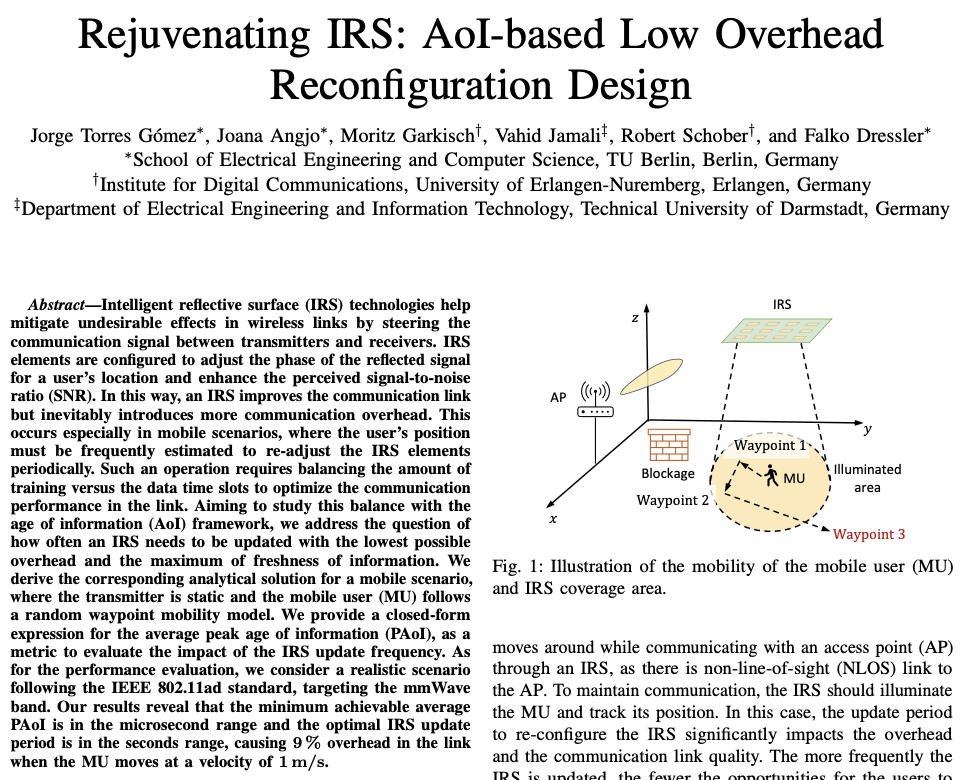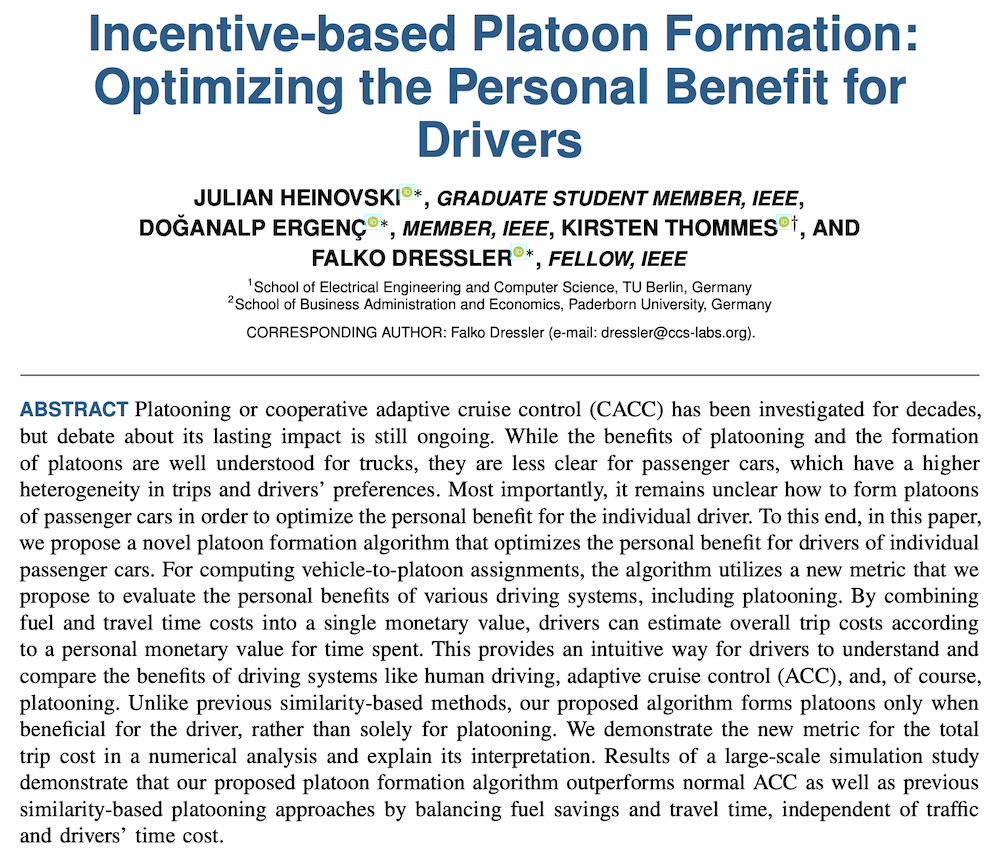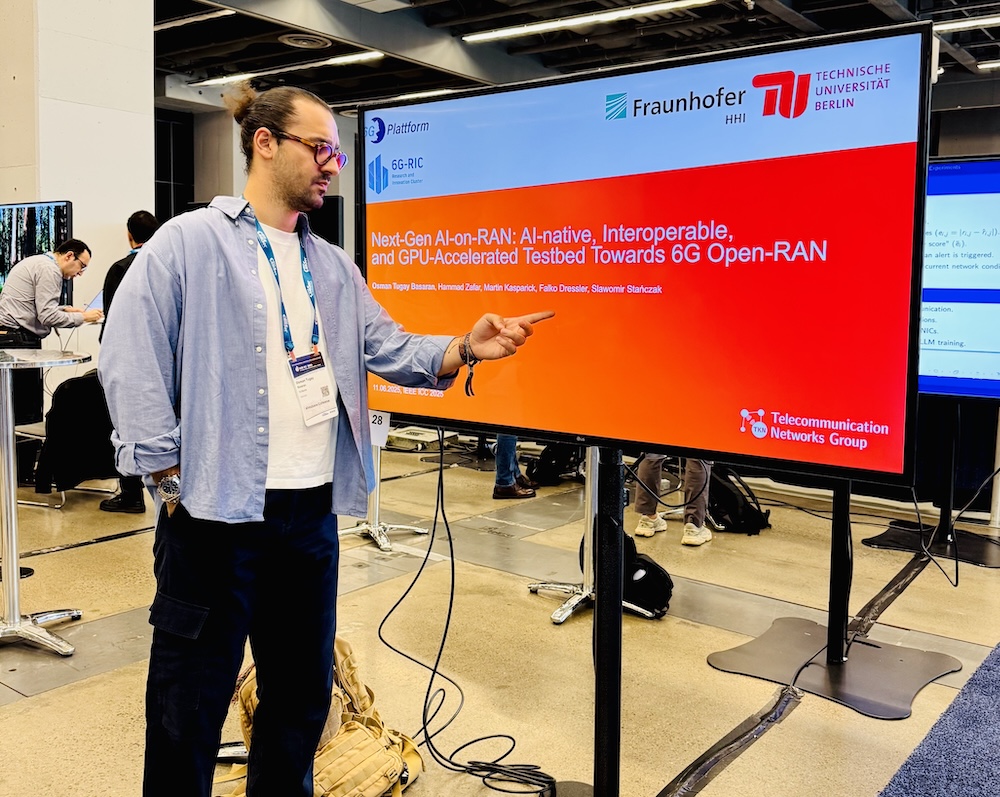Literature Database Entry
boehm2024analysis
Stefan William Böhm, "Analysis of environmental influence on WiFi FTM with ESP32 hardware," Bachelor Thesis, School of Electrical Engineering and Computer Science (EECS), TU Berlin (TUB), March 2024. (Advisor: Sascha Rösler; Referees: Falko Dressler and Thomas Sikora)
Abstract
One of the reasons for my bachelor thesis is that the IEEE has developed a new method of device localization. It turned out that for some devices the error was high [1]. Here I concentrate on the devices that are standardized and are therefore easier to replicate, such as the ESP32-S2. My bachelor thesis is aimed at addressing the problem that there are still no large-scale measurements in various environments, including everyday environments, which can lead to a lack of awareness of certain influences. For this the distance measurement of two devices will be carried out via FTM, which can be representative for a localization by several devices.[2] With them a measurement campaign at different locations at the TU-Berlin, for example at the HFT building, at a glass wall of the glassfoyer, in a corridor, and in a combination of rooms and outside with different floor types, will be carried out to investigate on this problem. Different methods are tested for their influence, including the approach of walls, small-step movements in distance, to a wall and in height, the rotation and deformation of antennas, various attenuation elements such as doors and walls, tests in a coaxial environment, and the reliability of the device through hardware replacement. It turned out that very precise measurements were required as the system showed large differences in small-scale measurements. Especially in the corridor with a bigger sensitivity and error than in the more opened foyer. Antenna deformations and their rotations also showed larger deviations from each other, which was probably due to the sensitive environment of the corridor. The coax environment showed more precise and the most accurate results. With this data, the weaknesses and uncertainties of an ESP32-based localization system can be found and corrected. At the same time, the results can give the research new questions to deepen certain aspects of my bachelor thesis, such as simulating the multipath effect so that it resembles the results of my practical measurements to get more accurate insights into individual signals an their behavior.
Quick access
Contact
Stefan William Böhm
BibTeX reference
@phdthesis{boehm2024analysis,
author = {B{\"{o}}hm, Stefan William},
title = {{Analysis of environmental influence on WiFi FTM with ESP32 hardware}},
advisor = {R{\"{o}}sler, Sascha},
institution = {School of Electrical Engineering and Computer Science (EECS)},
location = {Berlin, Germany},
month = {3},
referee = {Dressler, Falko and Sikora, Thomas},
school = {TU Berlin (TUB)},
type = {Bachelor Thesis},
year = {2024},
}
Copyright notice
Links to final or draft versions of papers are presented here to ensure timely dissemination of scholarly and technical work. Copyright and all rights therein are retained by authors or by other copyright holders. All persons copying this information are expected to adhere to the terms and constraints invoked by each author's copyright. In most cases, these works may not be reposted or distributed for commercial purposes without the explicit permission of the copyright holder.
The following applies to all papers listed above that have IEEE copyrights: Personal use of this material is permitted. However, permission to reprint/republish this material for advertising or promotional purposes or for creating new collective works for resale or redistribution to servers or lists, or to reuse any copyrighted component of this work in other works must be obtained from the IEEE.
The following applies to all papers listed above that are in submission to IEEE conference/workshop proceedings or journals: This work has been submitted to the IEEE for possible publication. Copyright may be transferred without notice, after which this version may no longer be accessible.
The following applies to all papers listed above that have ACM copyrights: ACM COPYRIGHT NOTICE. Permission to make digital or hard copies of part or all of this work for personal or classroom use is granted without fee provided that copies are not made or distributed for profit or commercial advantage and that copies bear this notice and the full citation on the first page. Copyrights for components of this work owned by others than ACM must be honored. Abstracting with credit is permitted. To copy otherwise, to republish, to post on servers, or to redistribute to lists, requires prior specific permission and/or a fee. Request permissions from Publications Dept., ACM, Inc., fax +1 (212) 869-0481, or permissions@acm.org.
The following applies to all SpringerLink papers listed above that have Springer Science+Business Media copyrights: The original publication is available at www.springerlink.com.
This page was automatically generated using BibDB and bib2web.






